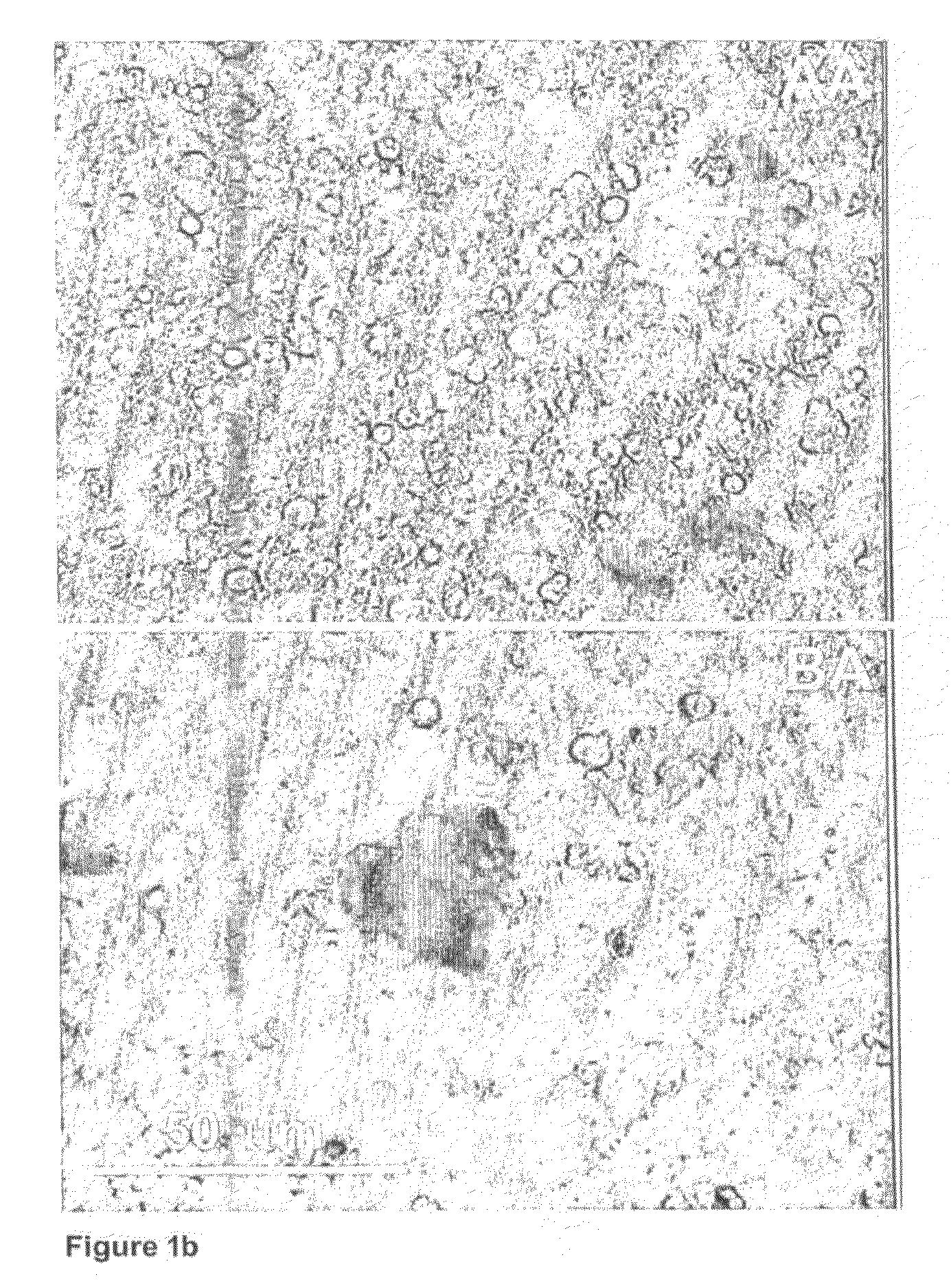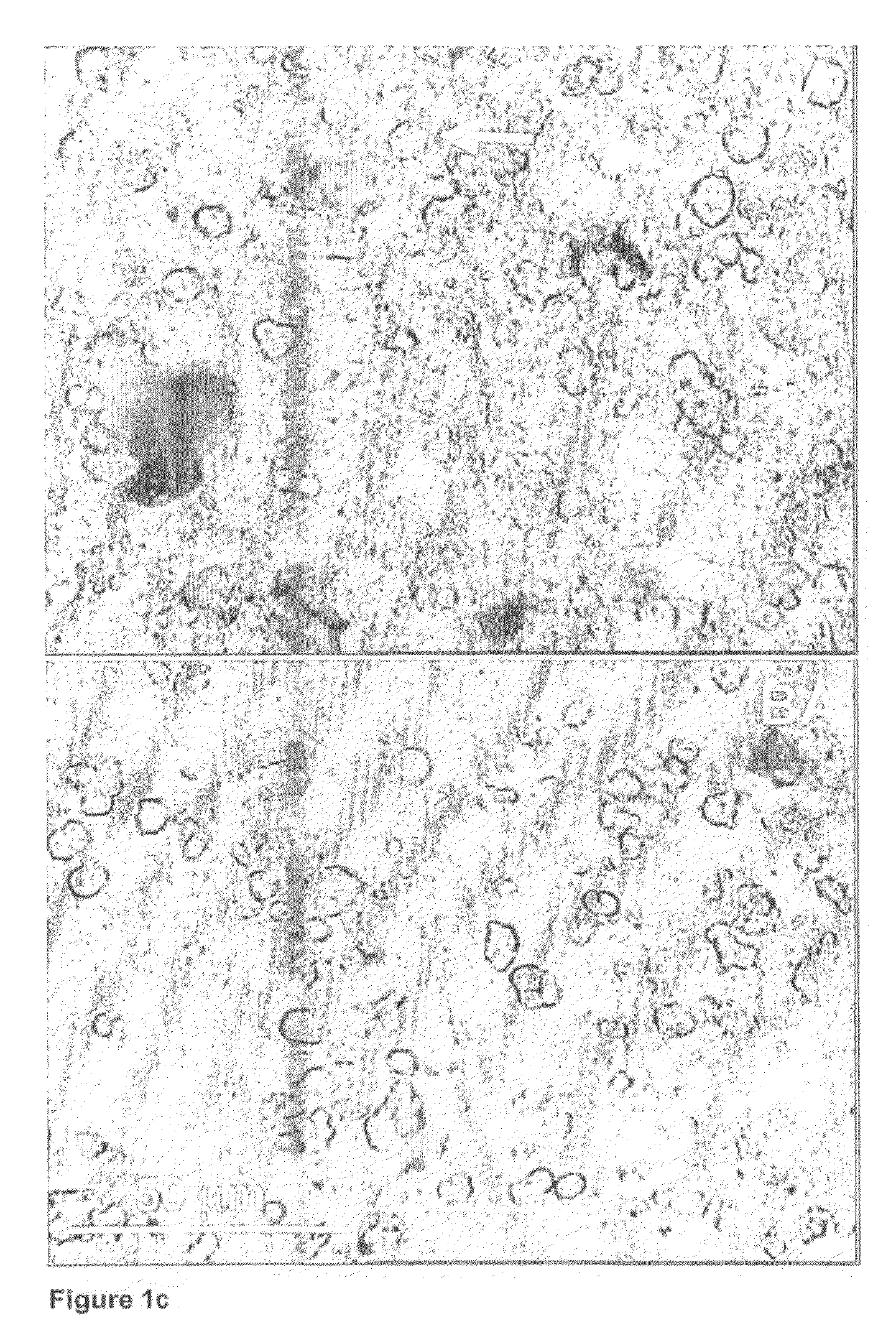Modified cocoa product and process for its manufacture
a technology of modified cocoa and cocoa powder, which is applied in the field of cocoa products, can solve the problems of increased moisture, uncontrollable anti-wettability effect, and inability of starch to scavenge migrating fat in powdered cocoa matrix, and achieve the effect of improving wettability factors and decreasing phospholipid conten
- Summary
- Abstract
- Description
- Claims
- Application Information
AI Technical Summary
Benefits of technology
Problems solved by technology
Method used
Image
Examples
example 1
Phospholipolysis of Cocoa Liquor
[0072]A twin-blade mixer (Winkworth®) fitted with a jacketed cell was used for cocoa liquor processing. Exactly 300 g of cocoa liquor were weighed into the cell kept at 49.5±0.5° C. and liquefied. The melted liquor was moisturized with 12.4 g water, followed by adding 500 mg Ultra® and tightly sealing the cell to avoid moisture loss. The enzymatic process proceeded for 60 min at 50° C. and 95 rpm. After phospholipolysis, the cell was unsealed and the enzyme inactivated by keeping the liquor for 30 min at 82° C. and 95 rpm. The subsequent alkalization step consisted in dissolving 47 parts of potassium carbonate in 53 parts of water by weight, followed by adding 9 g of this solution into the liquor at 82° C. and 95 rpm. Finally, the operating temperature was brought to 125° C. and the liquor dried for 60 min at 95 rpm in the unsealed cell. In addition, the above process was repeated in the absence of Ultra® to obtain a control sample using another 300 g...
example 2
Hexane-Based Defatting of Processed Cocoa Liquor
[0073]Processed cocoa liquor and control (Ex. 1) were defatted at 50° C. to decrease the level of neutral lipids for improved recoveries of endogenous PL from the cocoa matrix and its microscopic evaluation. The following defatting procedure was applied: One volume (e.g. 50 g) of cocoa liquor is brought to 50° C., weighed into a 250 mL glass beaker pre-heated to 50° C. and completed with two volumes of hexane (i.e. about 100 mL) that was previously brought to 50° C. The resulting suspension is stirred for one min at 50° C. using a spatula. The suspension is passed through a No. 602 filter paper sheet that is kept in an appropriate Büchner type of Pyrex®-glass filter-holder pre-heated to 50° C. The Büchner filtration procedure is assisted using a vacuum water pump. The resulting filter cake is re-suspended in two volumes of hexane as above, after which the filtration procedure is repeated to obtain desolvantized and defatted cocoa solid...
example 3
Extraction of Total Lipids (TL)
[0074]TL were extracted using the method of Folch et al [A simple method for the isolation and purification of total lipids from animal tissues, 1957, J Biol Chem 226: 497-509]. In principle, 10 g defatted cocoa liquor was suspended in two volumes of water and extracted using 19 volumes chloroform-MeOH 2:1 (v / v).
[0075]The extract was Büchner-filtered and partitioned against 0.2 volumes 0.88% KCl. Lipids in the lower-phase were concentrated to dryness and weighed.
PUM
| Property | Measurement | Unit |
|---|---|---|
| temperature | aaaaa | aaaaa |
| pH | aaaaa | aaaaa |
| temperatures | aaaaa | aaaaa |
Abstract
Description
Claims
Application Information
 Login to View More
Login to View More - R&D
- Intellectual Property
- Life Sciences
- Materials
- Tech Scout
- Unparalleled Data Quality
- Higher Quality Content
- 60% Fewer Hallucinations
Browse by: Latest US Patents, China's latest patents, Technical Efficacy Thesaurus, Application Domain, Technology Topic, Popular Technical Reports.
© 2025 PatSnap. All rights reserved.Legal|Privacy policy|Modern Slavery Act Transparency Statement|Sitemap|About US| Contact US: help@patsnap.com



